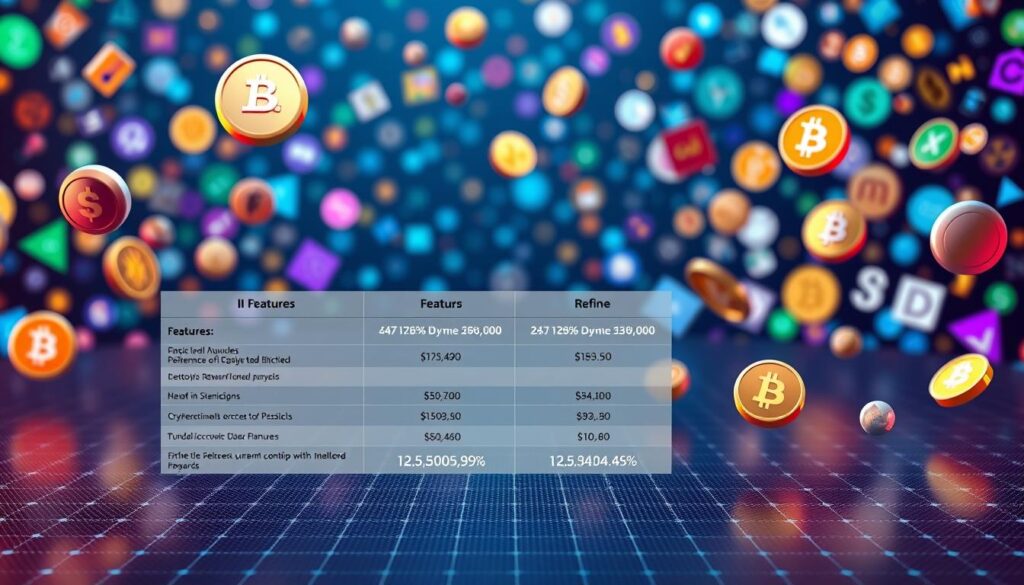Now Reading: Crypto Tax Reporting Made Easy: Tips and Best Practices
- 01
Crypto Tax Reporting Made Easy: Tips and Best Practices
Crypto Tax Reporting Made Easy: Tips and Best Practices
Navigating digital asset taxes can feel overwhelming, but it doesn’t have to be. The IRS classifies virtual currencies like property, meaning transactions often trigger obligations similar to trading stocks or bonds. Whether you’re swapping tokens, selling holdings, or earning rewards, understanding the rules helps avoid costly errors.

Since 2020, the IRS has prioritized tracking digital asset activity. Taxpayers must now answer a question about virtual currency transactions at the top of Form 1040. This signals stricter enforcement and highlights the need for accurate record-keeping. Properly reconciling gains and losses requires using Schedule D and Form 8949 to detail each transaction’s specifics.
This guide simplifies the process by breaking down compliance strategies into actionable steps. You’ll learn how to organize records, identify deductible losses, and leverage tax-saving opportunities. We’ll also explore tools that automate calculations, saving time while reducing audit risks.
Key Takeaways
- The IRS treats digital assets as taxable property, requiring disclosure of sales, trades, or earnings.
- Form 1040 now includes a direct question about virtual currency activity to improve compliance.
- Schedule D and Form 8949 are critical for reporting capital gains and losses accurately.
- Detailed transaction records help minimize errors and support claims during audits.
- Automated tools streamline tax preparation and ensure adherence to IRS guidelines.
Understanding Crypto Tax Reporting in the U.S.
The foundation of accurate tax compliance lies in knowing how digital transactions are viewed by regulators. Since 2014, the IRS has classified virtual currencies as property, mirroring rules for traditional assets like stocks or real estate. This framework shapes how gains, losses, and income from these holdings are documented.
Why Virtual Currencies Receive Property Status
Under IRS Notice 2014-21, digital assets aren’t treated as cash but as investments. This means selling or exchanging them triggers capital gains calculations, similar to trading shares. Simply holding these assets in a wallet or exchange account—without disposal—doesn’t create immediate obligations.
When Transactions Require Documentation
Four primary activities demand attention:
- Converting holdings to U.S. dollars or other fiat currencies
- Swapping one digital asset for another
- Using holdings to pay for goods or services
- Earning rewards through staking or mining
Accounts like IRAs or Roth IRAs can defer or eliminate tax liability for these events. However, tracking every disposal—whether through sales, trades, or purchases—is critical to avoid underreporting.
Key Tax Forms for Crypto Tax Reporting
Mastering the necessary paperwork ensures compliance and peace of mind. Three critical documents shape how investors disclose transactions involving virtual holdings. Let’s break down their purposes and connections.

Form 1040 & Schedule D Explained
Every U.S. filer starts with Form 1040. A mandatory question at the top now asks about virtual currency transactions. This signals heightened scrutiny for digital asset holders.
Schedule D acts as the bridge between detailed records and your main return. It summarizes total gains or losses from sales, trades, or exchanges. Think of it as the final tally for your annual activity.
The Role of Form 8949 in Reporting Transactions
This form provides transaction-level details that Schedule D can’t capture alone. Each sale requires:
- Acquisition and sale dates
- Original cost basis
- Proceeds from disposal
You can submit multiple Forms 8949 if needed. Platforms might send Form 1099-B, but many don’t yet support this for digital holdings. Always cross-check platform data with personal records.
How to Calculate Your Capital Gains and Losses
Accurately assessing your financial outcomes starts with understanding core calculations. Every disposal of digital holdings requires precise math to determine profit or loss. Let’s simplify the process.
Determining the Cost Basis of Your Digital Assets
Your cost basis is the original value of an asset, including purchase fees. For example, buying $500 of Bitcoin with a $10 platform fee gives a $510 basis. This figure becomes your starting point for all future gain-loss calculations.
Short-Term vs. Long-Term Gain Considerations
Holding periods decide tax rates. Assets sold within a year trigger short-term gains, taxed like regular income. Those held longer qualify for long-term rates (0%, 15%, or 20%) based on income.
Use this formula: Sale Proceeds – Adjusted Cost Basis = Gain/Loss. Track fees during both acquisition and disposal to refine numbers. Losses can offset gains or up to $3,000 of ordinary income yearly, with leftovers rolling forward.
For complex scenarios like tax implications of digital asset transactions, detailed records prove essential. Automation tools help manage holding periods and basis adjustments efficiently.
Reporting Crypto Transactions on Your Tax Return
Properly documenting your digital asset activity is the cornerstone of meeting IRS obligations. Every sale, trade, or exchange requires precise tracking of four elements: purchase date, original cost, disposal date, and final proceeds. Without these details, calculating gains or losses becomes guesswork.

Utilizing Detailed Transaction Records
Start by grouping disposals into short-term (held ≤1 year) and long-term categories. This split determines tax rates and shapes how you complete IRS forms. Short-term gains use ordinary income rates, while long-term disposals often qualify for lower brackets.
Here’s how to structure your reporting:
- Log acquisition dates and costs for every asset
- Note fees paid during purchases or sales
- Match each disposal to its original purchase
Transfer these details to Form 8949 first. List every transaction with dates, costs, and proceeds. Summarize totals on Schedule D before finalizing Form 1040. Some platforms provide Form 1099-B, but always verify its accuracy against your records.
Maintain organized files with timestamps, asset types, and transaction IDs. This practice simplifies audits and supports claims. For those involved in cashback rewards programs, track these as income separate from capital gains.
Consistent documentation turns a complex process into manageable steps. Digital tools can automate data aggregation, but manual reviews ensure nothing slips through cracks.
Handling Crypto Income from Mining, Staking, and Rewards
Earning digital assets through activities like mining or staking creates unique reporting requirements. The IRS treats these gains as ordinary income based on their market value when received. Proper classification determines whether you’ll use Schedule 1 or Schedule C—a distinction that impacts your tax rate and filing obligations.
Reporting Income on Schedule 1 vs. Schedule C
Schedule 1 handles non-business earnings from sources like airdrops or forks. For example, receiving free tokens through a promotional event requires reporting their dollar value as other income here. This applies even if you didn’t actively participate in earning them.
Schedule C comes into play for self-employment activities. Mining operations or providing services for digital assets often qualify as business income. If your net profit reaches $400 or more in a year, you’ll also need to file Schedule SE for Social Security and Medicare taxes.
How Airdrops and Forks Affect Your Taxes
Unexpected events like blockchain forks or token distributions count as taxable income. The IRS requires you to report the fair market value of these assets on the day you gain control. Forks creating new coins are treated similarly to airdrops—both trigger ordinary income obligations.
Platforms may issue Form 1099-MISC or 1099-NEC for rewards, but many don’t. Always track earnings independently. Business activities involving frequent mining or staking could require quarterly estimated payments to avoid penalties.
Common Challenges in Crypto Tax Reporting
Managing digital asset taxes presents unique hurdles for investors. High-volume trading across platforms and evolving regulations create complexity. Staying organized and informed is essential to avoid penalties.

Tracking Multiple Transactions and Platforms
Active traders often juggle thousands of buys and sells yearly. Data from exchanges may lack uniformity, forcing manual reconciliation. Missing cost basis details or mismatched timestamps compound errors.
Since 2023, U.S. platforms must issue Form 1099-B for disposals. However, not all exchanges comply consistently. Cross-referencing records with wallet activity ensures accuracy.
Navigating IRS Guidelines and Updates
Regulatory shifts demand constant vigilance. The agency now requires exchanges to collect taxpayer identification details. This supports automated reporting but increases scrutiny on discrepancies.
Three strategies simplify compliance:
- Use portfolio trackers to aggregate data from all platforms
- Flag short-term vs. long-term holdings monthly
- Review IRS notices for rule changes affecting staking or DeFi
Proactive organization reduces audit risks. Digital tools help, but human oversight catches platform-specific quirks.
Tools and Software to Simplify Crypto Tax Reporting
Modern solutions transform complex obligations into manageable tasks. Specialized platforms now handle the heavy lifting of transaction tracking and form generation. These systems sync with your financial activity across wallets and trading platforms, turning months of work into minutes.
Automated Transaction Tracking Tools
Leading tax software eliminates manual data entry by importing your entire transaction history. It identifies cost basis, calculates gains/losses, and categorizes disposals by holding period. Platforms like CoinLedger support 300+ exchanges and wallets, reconciling data discrepancies automatically.
This automation ensures every swap, sale, or reward gets logged correctly. The system flags missing cost basis details and suggests corrections. Over 700,000 investors rely on these tools to avoid spreadsheet nightmares.
Connecting Wallets and Exchanges
Integrating multiple accounts creates a unified financial picture. Secure API connections pull data from platforms like Coinbase or MetaMask without exposing private keys. The software maps transactions across chains and tokens, even handling DeFi activities.
Once connected, the platform pre-fills IRS forms 8949 and Schedule D with your finalized numbers. It exports reports compatible with major tax filing software. This seamless process reduces errors while ensuring compliance with evolving regulations.
By merging automation with precision, these solutions save hundreds of hours annually. They turn chaotic records into audit-ready documentation, letting you focus on strategy rather than paperwork.
Best Practices for Accurate Crypto Tax Reporting
Staying compliant doesn’t require luck—just strategic organization and attention to detail. Proper documentation forms the backbone of IRS requirements, ensuring you’re prepared for any scrutiny.
Building a Reliable Paper Trail
Every transaction needs four core details: dates, dollar values, wallet addresses, and purpose. Save exchange statements and wallet histories. Use spreadsheets or apps to timestamp entries automatically. Cloud backups prevent data loss during device failures.
Smart Strategies to Minimize Errors
Reconcile your records with platform-issued forms like 1099-B quarterly. Tax software can flag discrepancies between your numbers and exchange reports. Never assume small transactions are exempt—the IRS tracks all disposals.
Consult a professional if you’ve used decentralized platforms or earned staking rewards. Their expertise helps classify complex activities correctly. Consistent habits—like weekly record reviews—reduce last-minute stress and audit risks.
By treating documentation as non-negotiable, you transform uncertainty into confidence. The right systems turn annual obligations into routine tasks rather than crises.
FAQ
How does the IRS classify digital assets like Bitcoin?
The IRS treats digital assets as property, similar to stocks or real estate. This means every sale, trade, or exchange may trigger capital gains or losses, which must be reported on your annual return.
What forms are required to report gains from asset sales?
Most investors use Form 8949 and Schedule D to detail individual transactions. These forms help calculate net gains or losses, which are then transferred to Form 1040. Platforms like TurboTax or CoinTracker often automate this process.
Are rewards from staking considered taxable income?
Yes. Income from staking, mining, or airdrops is typically taxed as ordinary income at fair market value when received. Report these amounts on Schedule 1 or Schedule C if part of a business activity.
How do I determine the cost basis for older transactions?
Cost basis is usually the purchase price plus fees. For assets held across exchanges, use historical records or tools like Koinly to track acquisition dates and prices. The IRS accepts methods like FIFO (First In, First Out) for calculating basis.
What happens if I don’t report my digital asset transactions?
Failure to report can lead to penalties, interest, or audits. The IRS increasingly matches data from exchanges like Coinbase or Binance to taxpayer returns, making accurate reporting essential.
Can software help with tracking thousands of transactions?
Yes. Tools like ZenLedger or Crypto.com Tax sync with wallets and exchanges to aggregate data, classify events, and generate IRS-compliant forms. They also flag discrepancies to reduce errors.
How are hard forks or airdrops handled for tax purposes?
New tokens received from forks or airdrops are taxed as income based on their value at receipt. Report them in the year they’re accessible, even if not immediately sold.
What’s the difference between short-term and long-term gains?
Assets held under one year incur short-term gains, taxed at ordinary income rates. Holding longer than a year qualifies for long-term rates, which are generally lower (0%, 15%, or 20%).














